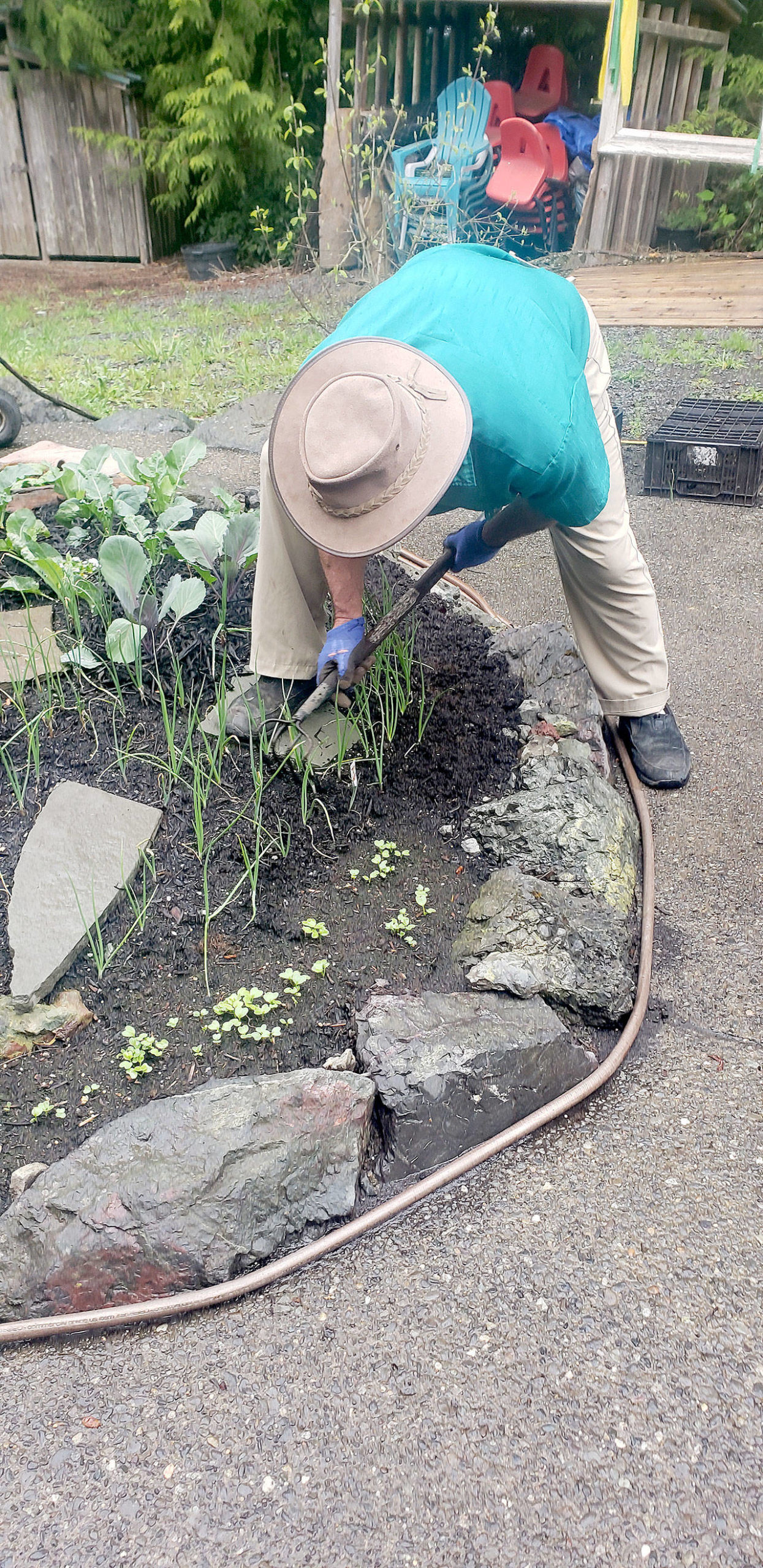THE WEATHER WAS so idealistic for Mother’s Day and the much-needed rain returned to boost the springtime growth of your yard and your “Corona Garden.”
As things get growing around your yard the rain, along with your watering, beats down upon the soil.
So let’s talk about your soil.
Today, I am going to give you the “dirt” on dirt.
My memory begins with my Cornell College-educated, horticulturist parents telling me “Dirt, Andrew, is what you sweep under the rug, soil is what you plant in.”
So what makes soil so special? Soil is comprised of four different “factions.”
Each one is vital and each one needs to work in harmony with the others in order to achieve excellent fertility.
“Organic Faction” is the first category and it is comprised of all those living, dead, and decomposing organic materials. Yes, living organisms are part of the critical first faction of soil and it is not just worms.
Your soil, in order to be healthy, must contain a plethora of living organisms that break down organic material, create the soil, battle the bad organisms and then in the case fungi, are the main catalyst to having nutrients readily available for the plant.
This is why organic fertilizers are so important because they do not release in such a rapid manner as to become toxic to the microbes.
When you use commercial, highly water-soluble fertilizer, you turn your garden into a “addict.” It is now dependent on that nutrient source because you have killed off the living organic faction that causes natural fertility.
Dead organic material ( i.e. compost, manure, leaf mold, peat moss, worm casings) first acts like a sponge and soaks up moisture. It then slowly releases it and like very sandy soils, does not rapidly dry out.
All dead organic material eventually turns to hummus and then humic acids which are a tremendous source of nutrient.
Humic acid also binds small clay and silt particles together so in the long run organic material vastly improves your soil structure and therefore it’s fertility.
Remember, organic material is always decaying away and every year copious amounts must be re-added and tilled in to replenish that which was lost.
The “solid faction” is the next slice of soil and is critical for a couple of reasons.
Without a solid faction (mostly sand) your soil would rot away to nothing.
Too much organics and the soil gets sodic — wet, mushy and becomes hard packed.
The solid faction also is of an opposite ion charge to most nutrients, so it acts as a magnet holding onto nutrients longer before moisture leeches it away.
As we learned last week, solids are different particle sizes, so again it greatly improves your soil structure.
As a last benefit, the solid faction help soil drain so it minimizes over-watering and it helps reduce many pestilence problems.
Next is the “atmospheric faction” and this one is more than just a bunch of hot air.
Soil must breathe in order to be healthy.
You have all the multitude of living organism in the soil and they need atmosphere to breathe and survive. Some only live on nitrogen.
At the same time, many harmful gases are building up in your soil from fecal matter, death and decay and must be evacuated from the soil.
The atmospheric faction comes from “pore space,” those areas between the various particle sizes in your soil.
This is why so many different particle sizes are important.
The more individual shapes in the soil the less it can compact down and diminish pore space. Light, loose, airy soil is what we are looking for.
This is why, whenever I step on my soil or lean on one hand in the soil as I pull a weed, I make sure I then till that small compacted area.
The place you step will be the least fertile area because you compacted the pore space. This is why cultivating your soil is so critical.
All soil makes a crust and this crust impedes atmospheric transfer.
Crust also causes the water to run off rather than equally penetrate the ground.
Cultivating every few weeks is a great way to improve soil fertility and balance the atmospheric faction.
I love to cultivate heavily then add a wonderful semi-decomposed mulch (more organics) over the top, which also prevents water runoff.
Finally, last but not least, there is the “liquid faction.”
Plants need water to survive and so does all those living things.
How does liquid get into the soil and persist for an adequate time? Pore space.
This is why heavy clay and silt soil are so infertile — they have little or no pore space and water just sits there unable to work its way through the soil.
When water works its way down it forces out the atmospheric faction and then right behind the water, new atmosphere enters the soil replacing that which was expelled.
If your soil holds too much water, it is at the expense of the atmospheric faction and life in your soil dies.
So again, various and numerous particle sizes in your soil benefits all four factions and makes your soil amazingly fertile.
Now it is time for me to cultivate and mulch my “Corona Garden.”
I hope you will do so soon as well. And talking about well — stay well all.
________
Andrew May is a freelance writer and ornamental horticulturist who dreams of having Clallam and Jefferson counties nationally recognized as “Flower Peninsula USA.” Send him questions c/o Peninsula Daily News, P.O. Box 1330, Port Angeles, WA 98362, or email news@peninsuladailynews.com (subject line: Andrew May).

